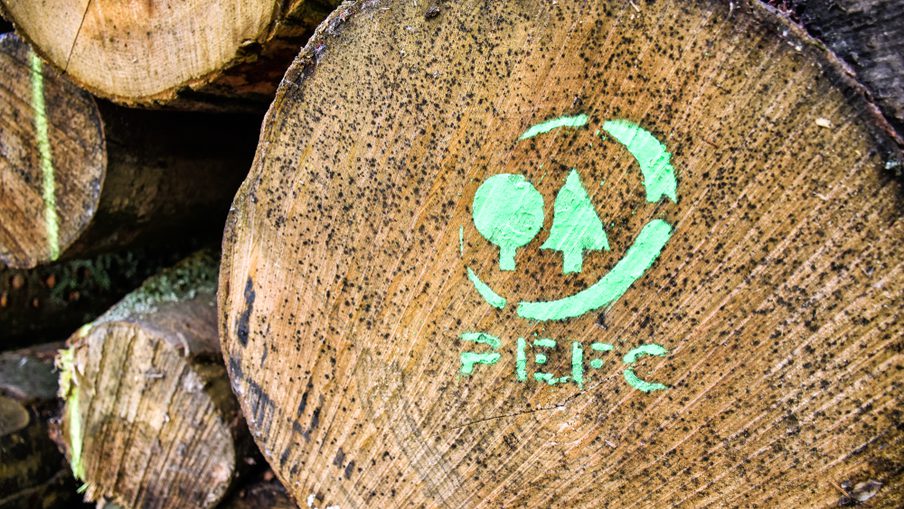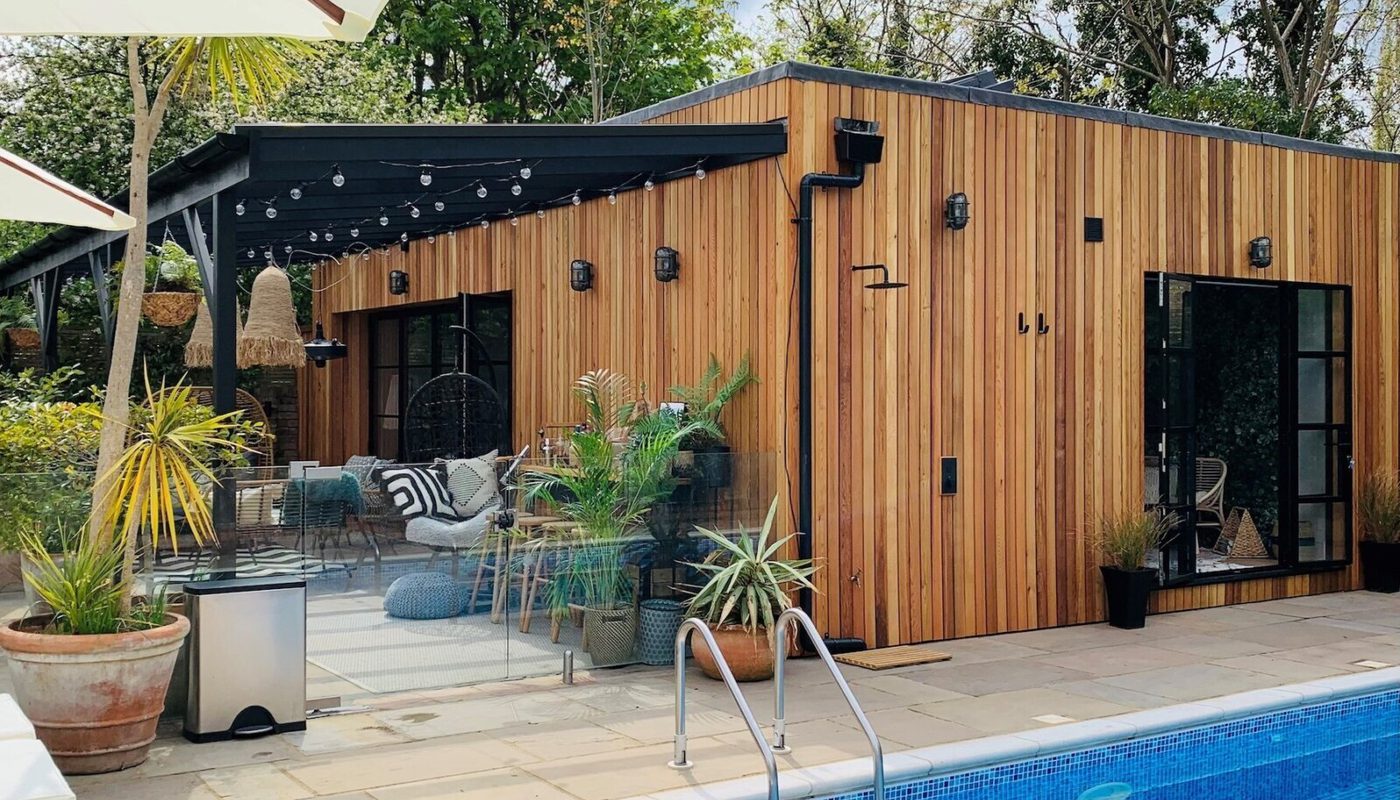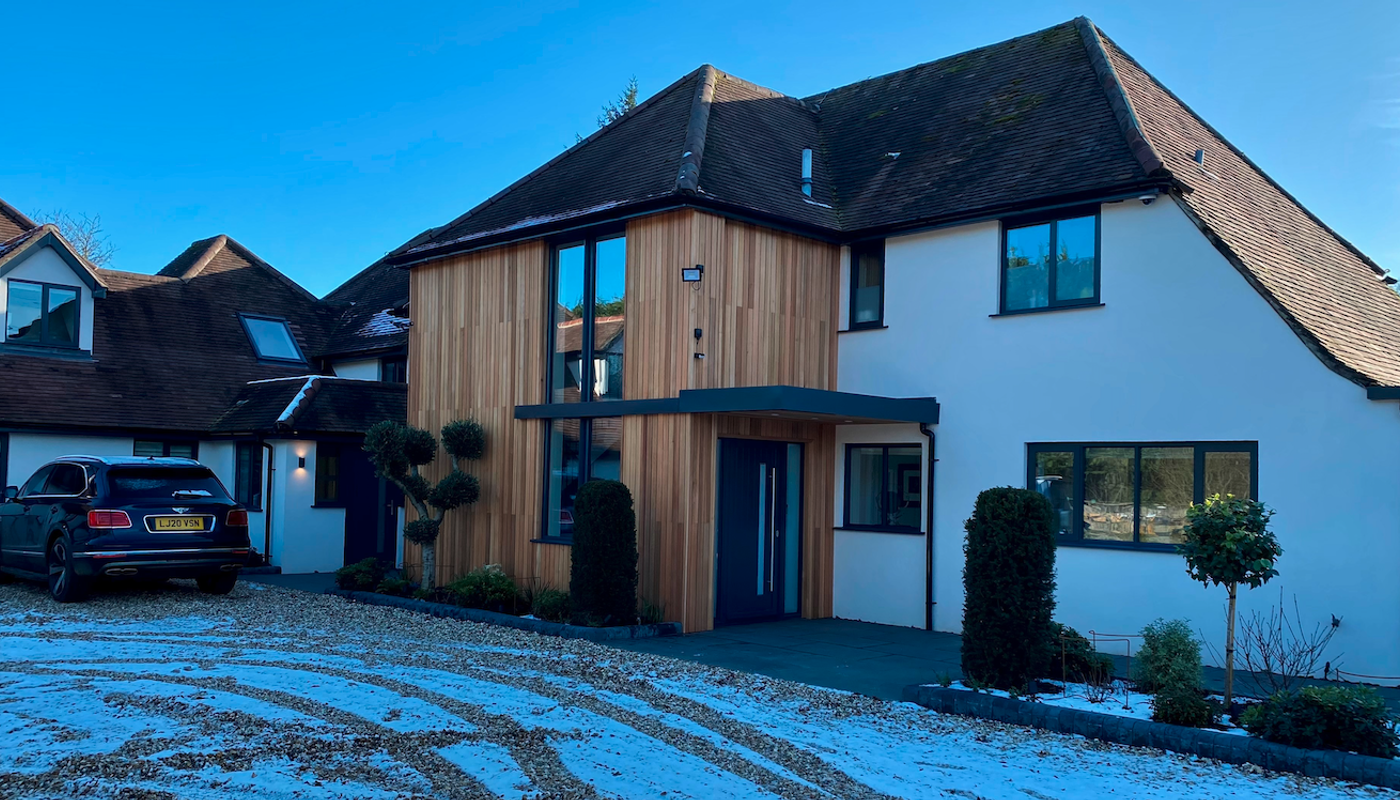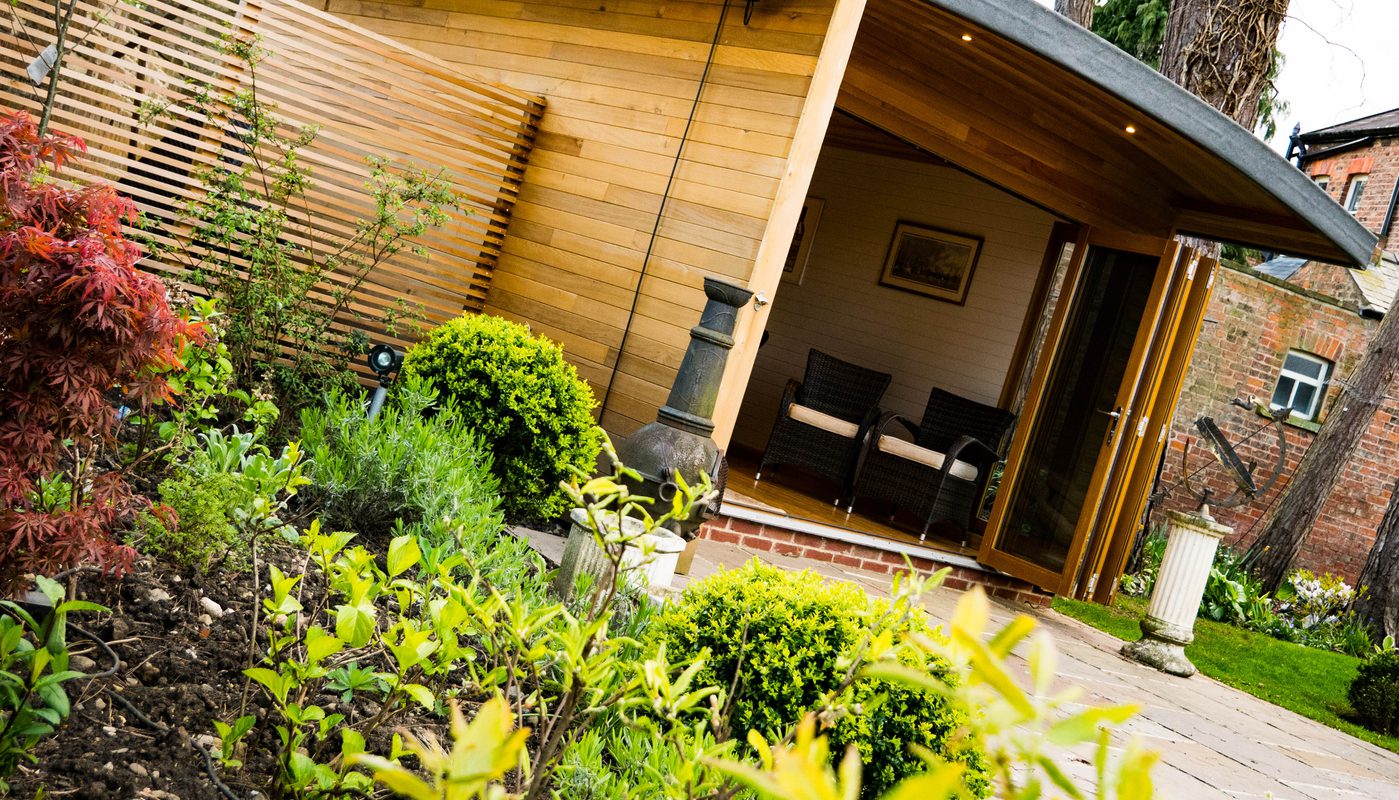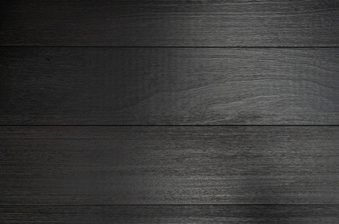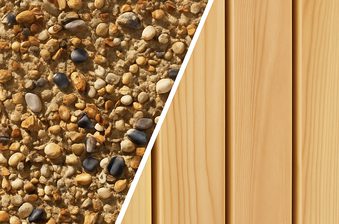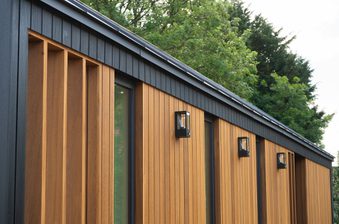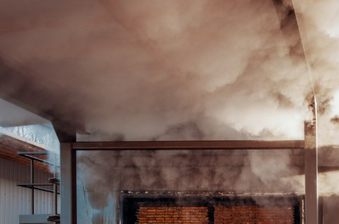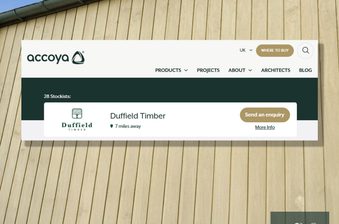For self-builders, DIYers, architects and designers, making the ‘right’ choice for the planet when planning your project has never been so important. People buy into sustainable brands.
As a 100% renewable, carbon-sequestering and naturally insulating material, timber cladding might be the ultimate eco-friendly building product — as long as it’s been harvested and produced in a responsible, sustainable way.
Here’s why you might like to consider timber cladding for your next sustainable building project and how to know that yours is the real deal.
Timber’s carbon footprint is incredibly low
When it comes to fighting climate change, wood is the premier building material. During their growth, trees absorb and store carbon dioxide — a greenhouse gas — from the atmosphere, releasing it back without surplus. This process is known as carbon sequestration.
Trees are carbon sinks, essentially.
For every tonne of timber produced, 1.8 tonnes of carbon dioxide is stored from the atmosphere. The remains locked in for the lifetime of the product, even after harvest and use for cladding. Let’s not also forget that timber is also very lightweight, meaning transport and construction costs are minimal.
All this compares very kindly to other building materials, whose carbon emissions are colossal; as a whole, the construction industry accounts for 38% of all global greenhouse gases. The manufacture and decomposition of concrete represents a whopping 8% of all emissions.
Timber-clad buildings are more energy efficient
Timber, as a material, is a natural insulator that resists the transfer of heat. When applied as cladding on a building, heat loss through the walls is minimised, keeping buildings warmer in the winter. Wood cladding can also absorb the sun’s heat, preventing it from penetrating the building and overheating the building.
The reason behind timber’s natural insulation properties are the tiny air pockets in its matrix-like cellular structure. These trap heat, preventing it from transferring across, providing a buffer against swings in temperature. These natural properties can be further bolstered with insulating materials added between the exterior wall and cladding layer, as part of a dedicated cladding system.
The result is a more consistent, comfortable temperature all year round. This reduces the need to turn on fossil fuel-driven central heating for so long, and the need for energy-intensive air conditioning or cooling systems — saving money and the environment!
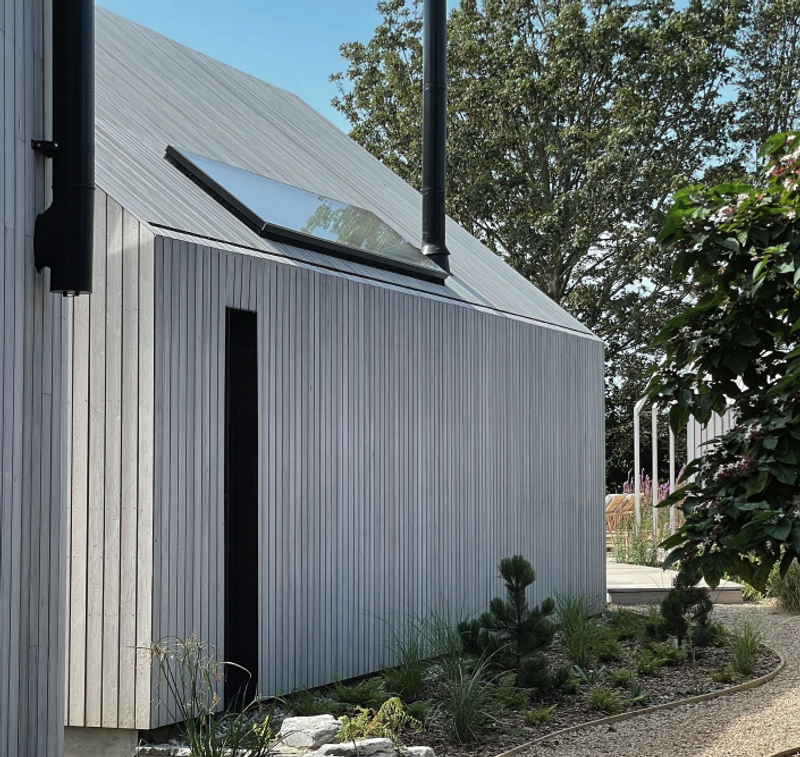
Timber looks sustainable and improves our mental health
When public perception counts for so much, being seen to do the environmentally-correct thing is hugely valuable. Creating spaces that exude naturalness — such as with the use of timber cladding — is a great way to showcase your project’s sustainability.
There’s no denying that wood is an inherently beautiful material. In fact, science shows that there’s something about timber’s grain pattern, texture and even scent that appeals to humans on a deeper level.
This is known as biophilia — as creatures, we have an innate attraction to things that are natural. Incorporating these elements into your building is called biophilic design.
Many studies have established that natural environments have a ‘large effect on increasing positive emotion and decreasing negative emotion’. This has also burnished timber’s credentials as a modern, progressive, sustainable building material.
Wood is 100% naturally renewable…
Since timber does literally grow on trees, then there’s always the opportunity to plant more — in this way, it is 100% renewable. Unlike fossil fuels, wood is not a finite resource that will eventually run out; forests can always be replenished.
… but it must be from sustainably-managed forests
Just because wood is renewable material doesn’t mean it is sustainable. If the trees are harvested faster than they’re replenished, then, taken to the extreme, we’ll eventually run out, decimating natural habitats and endangering biodiversity. Sustainable forest management, therefore, requires replanting schemes to be implemented or allowing sufficient time for natural regeneration to occur.
So we don’t fuel demand for illegally and unsustainably logged timber, here’s a responsibility on timber suppliers and customers to ensure their wood is from a sustainable source.
How do I know my timber cladding is sustainable?
As we’ve established, timber cladding is only a sustainable material if it has been sourced, harvested and manufactured responsibly. The same goes for any other type of timber product! Consider choosing certified timber from a reputable supplier, and certainly avoid endangered wood species or products treated with chemical-heavy processes.
Choose FSC® or PEFC timber from a reputable supplier
Be sure to work with a cladding merchant or supplier with a clear environmental policy. These merchants will be able to offer timber products that come from forests certified by the Forestry Stewardship Council® (FSC®) or the Programme for the Endorsement of Forest Certification (PEFC).
These two types of certification are the gold standard for sustainable timber. Both programs set rigorous standards for forest management practices; you can be absolutely assured that any wood carrying the FSC® or PEFC label was grown and harvested in a forest that is committed to the highest levels of social and environmental responsibility.
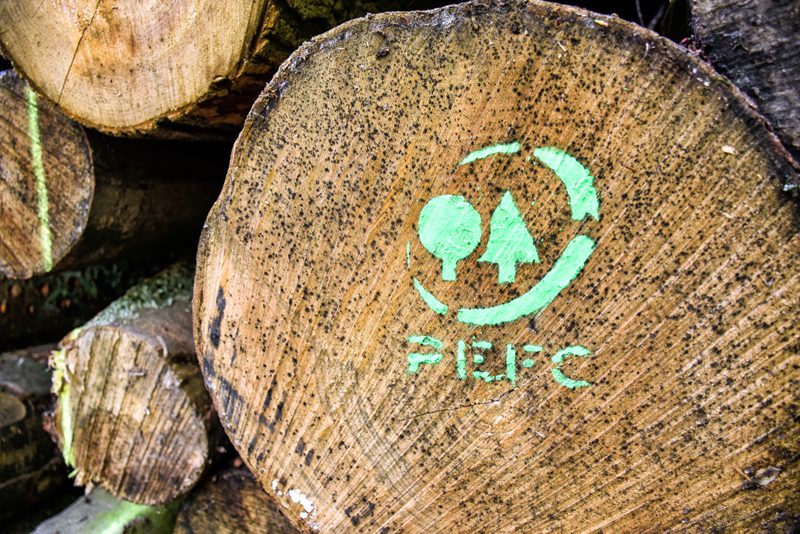
Whilst the primary drivers of deforestation are agricultural — woodland is often cleared to make way for palm oil farms, for example — the exploitation of timber and illegal logging for timber still also plays a role in depleting tree numbers.
This applies mainly to the tropics and subtropics — in countries like Nigeria, only 1% of the country’s natural forest remains. In Ghana, forests once covered over two-thirds of the country — now, it’s only 10%. Honduras only retains 16% of its original tree cover; in the Philippines, a mere 35% remains.
If you’re considering a tropical timber cladding species, be sure to source them from a merchant who has a clear environmental commitment. You can check to see whether a certain species is endangered on the IUCN Red List.
If you’ve got your heart set on the exotic walnut tones offered by certain tropical hardwoods like teak, there are some fantastic eco-friendly alternatives that are also much kinder on your pocket! Take a look at thermally-modified woods like ThermoWood®, Thermo-Ayous and Thermo-Tulipwood; the thermal modification process deepens the colour of the wood, mimicking the luscious tropical tones of endangered wood species fantastically.
Watch out for chemical-heavy treatments
Keep your eyes peeled for ‘preservative treated’ or ‘tanalised’ wood. Many types of timber cladding, particularly those at the cheaper end of the scale and those on offer in DIY home improvement stores, will have been impregnated under pressure with potentially toxic chemicals.
The treatments are forced into the fibres of the wood, altering their properties for enhanced durability. Whilst preservative technology has advanced over the years to be less environmentally damaging, if you’re after something that’s been modified, we’d recommend looking at heat-treated timber instead.
We’ve written a guide to thermal modification and pressure treatment, explaining how they differ.
Start your sustainable cladding project today
At Duffield Timber, we have decades of experience supplying sustainable timber cladding for home DIYers, self-builders, architects, contractors and specifiers. Choose from a range of quality species, all sourced in line with our environmental policy.
As well as FSC® and PEFC-certified options, our range also includes sustainable thermally-modified woods like ThermoWood®, Thermo-Ayous and Thermo-Tulipwood, with no toxic chemicals used in the production process.
All of our cladding is machined on-site by us to a range of modern designer profiles, including tongue & groove V-joint, shadow gap, featheredge and rainscreen — so you’ve got plenty of options.
